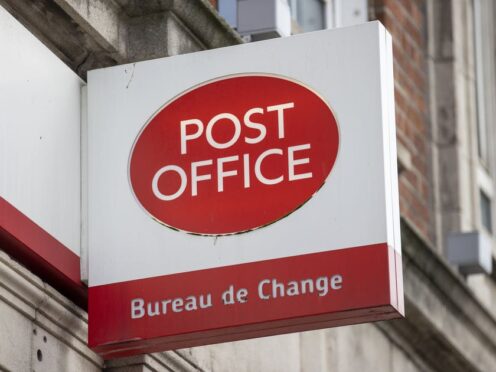The former head of the union for subpostmasters privately tipped off the Post Office about those “sniffing around” the Horizon IT system, an inquiry heard.
George Thomson, former general secretary of the National Federation of Subpostmasters (NFSP), also appeared to admit he knew the Post Office helpline was telling subpostmasters to make up shortfalls in their accounts themselves.
Earlier this year, the Trades Union Congress said the Communication Workers Union (CWU) was blocked from effectively organising at the Post Office, claiming the NFSP was given funds by the Post Office.
Mr Thomson, who served as general secretary between 2007 and 2018, gave evidence at the Post Office inquiry on Friday.
The inquiry was shown an email from Mark Davies, communications and corporate affairs director at the Post Office, sent on May 10 2015.
Part of the email read: “Our media relationships with George [Thomson] and team are very good at present – he has been tipping us off, privately, about people sniffing around Horizon.”
Asked by inquiry counsel Julian Blake if that was the case, Mr Thomson said Horizon was a “robust” system and that he worked closely with the Post Office to strengthen the franchise.
Mr Thomson added: “The better you can make a franchise, the more better rewarded your members will be.”
The inquiry was also shown an open letter from union member Chris Neill to the NFSP’s executive committee from July 2013, which stated fellow members felt “abandoned by our general secretary” and that he could “almost be accused of complicity with the Post Office”.
Asked by Mr Blake why he did not see “looking out for the little guy” as part of your job, Mr Thomson said: “I was careful not to be seen to be crying wolf.”
Mr Thomson told the inquiry there were discussions in 2013 around the NFSP’s long-term future and whether it had enough resources to continue.
Put to him by Mr Blake that it was important to keep the Post Office on side so they could provide future funding, Mr Thomson said: “I disagree with that.
“We did not change our view on Horizon because we were looking at our future and where we were going to go, absolutely not.”
Asked if he knew the Post Office helpline was deterring subpostmasters by telling them to make up shortfalls in their accounts on their own, Mr Thomson told the inquiry: “Myself or some of the team would be aware of that, without a doubt.”
Sam Stein KC, on behalf of a number of subpostmasters, asked Mr Thomson if it was fair to say he “got into the Post Office bed with Paula Vennells and did whatever she wanted you to do”, to which he replied: “It’s nonsense.”
The inquiry had earlier been shown an email sent on behalf of Mr Thomson in August 2013 which outlined plans for the Post Office and NFSP to sign a 15-year contract to represent all post office operators.
This included annual payments starting at £500,000 in 2013-14 and reaching £2.5 million from 2017 onwards to 2028.
Mr Thomson said it had taken “a lot of badgering” of then-Post Office chief executive Paula Vennells to agree to the deal, and that her team “would have preferred the NFSP withered on the vine”.
Put to him by Mr Blake that they were significant figures, Mr Thomson told the inquiry the NFSP “took on new functions” as part of the agreement.
Put to him that the NFSP was financially dependent on the Post Office at a time when issues with Horizon were ongoing, Mr Thomson said the money was “replacing what used to be membership money” after losing 8,500 subpostmasters, adding: “It was never ever tied to Horizon.”
The inquiry was shown a Computer Weekly article from May 2009 which discussed the cases of several high-profile subpostmasters, including Sir Alan Bates.
The subpostmasters told the media outlet their union had “refused to help them investigate their concerns”.
Asked by Mr Blake why the NFSP was not helping them, Mr Thomson said the federation had to seek permission from the Post Office first.
He said: “Every case that was brought to us, we took it up with the Post Office.
“You’re trying to make out that somehow we were flush with money… That’s not correct.”
Mr Thomson said he had investigated 20 or 30 subpostmaster cases at the “highest level” during his time as general secretary, and would have tried to employ a computer expert had he known more about the issues with Horizon.
On the Horizon IT system, Mr Thomson said: “It’s a strong system, it’s a well-used system, and I still support it systemically as being very robust.”
He also criticised all television programmes made about the Horizon IT scandal, such as a BBC Panorama investigation, as he said they “haven’t given a balance”.
More than 700 subpostmasters were handed criminal convictions between 1999 and 2015 when errors in the Post Office’s Horizon IT system meant money appeared to be missing from many branch accounts when, in fact, it was not.
It has been branded the biggest miscarriage of justice in British legal history.
